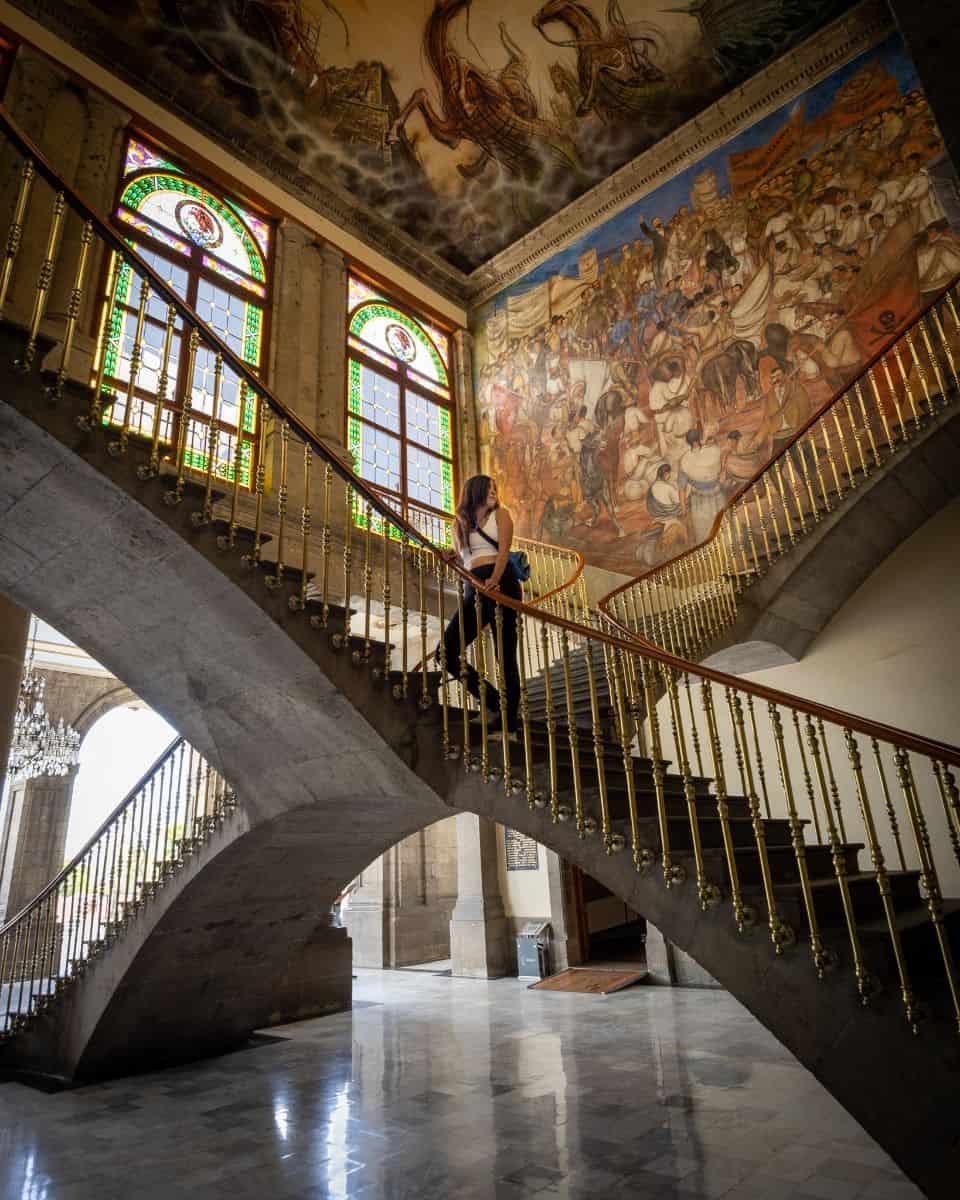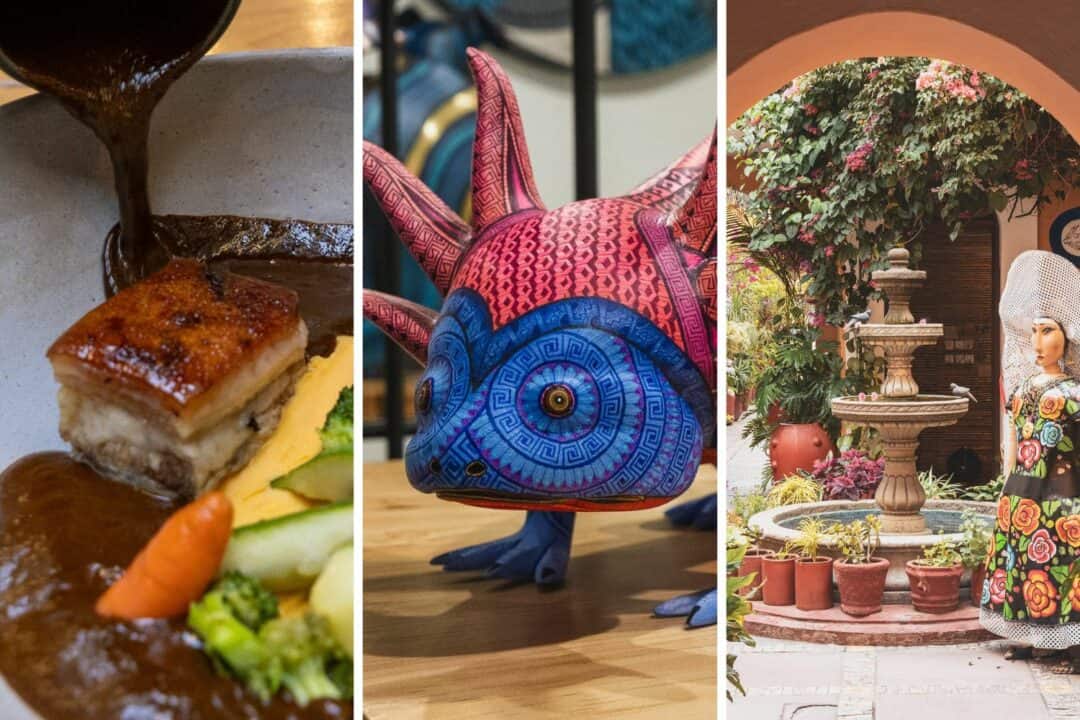Have you ever dreamed of stepping into a real-life fairytale castle?
Nestled within the tranquil surroundings of Chapultepec Park, the majestic Chapultepec Castle stands as a symbol of Mexico’s rich heritage and a fascinating junction where past converges with present!
In this comprehensive guide, we’ll walk you through our unforgettable visit to Chapultepec Castle, from the vibrant vendor-filled entrance to the castle’s elegant interior, filled with regal furnishings and historic murals.
But it doesn’t end there. We’ll also delve into the castle’s past, unearthing tales of Aztec sanctuaries, European royalty, and fierce battles from Pre-Hispanic times to the Mexican Revolution.
Not forgetting the practical details, we’ll guide you on how to reach the castle, tips for navigating its sprawling grounds, ticketing details, and other crucial information.
So, if you’re planning a trip to Mexico City or are a history aficionado yearning for an immersive experience, join us as we explore the timeless beauty of Chapultepec Castle!
How to Get to Chapultepec Castle
Chapultepec Castle is located in Chapultepec Park.
You’ll see all sorts of vendors outside the castle entrance – that’s how you know you’re in the correct place.
The vendors sell snacks, refreshments, and toys. The snacks and refreshments are mostly there for people that are leaving the castle – there is no food or drinks allowed on the castle grounds, so most visitors are hungry and thirsty by the time they leave – we sure were!
Here’s some information that you should know before visiting Chapultepec Castle:
- As of July 2023, tickets to enter the castle are $90 pesos per person.
- The castle’s hours are 9 am – 5 pm, Tuesday – Sunday (Closed on Mondays)
After purchasing your tickets, you go through a checkpoint where a security guard checks your bag – we assume they are looking for prohibited items such as weapons.
Then begins the real journey: The ascent to the castle. A long brick-paved walkway, flanked by lush, towering trees, winds its way up the hill.
The incline might be a little challenging for some, but the captivating views of the park and the anticipation of the historical marvel that awaits you at the top make the climb worth every step.

At the top of the hill is the castle. At the castle’s entrance, you’ll go through another checkpoint with security guards.
These guards told us to empty our water bottle – luckily for us, it was almost empty, so we drank whatever we had left and entered the castle grounds.
Exploring the Castle’s Exterior

The architectural beauty of Chapultepec Castle is a mix of neoclassical and neo-Gothic styles.
The exterior of the castle is also characterized by its beautifully crafted balconies. These structures jut out from the castle walls, offering panoramic views of Mexico City’s skyline and Chapultepec Park below.

If you’re looking for a space to rest after the long climb up to the castle, then the Jardín de Pérgolas on the left side of the castle’s main entrance offers a peaceful spot to rest – complete with benches and a fountain.

Inside Chapultepec Castle

Stepping through the castle’s main doors, we were greeted by the grand staircase leading up into the castle.
The elegant stairway sits below Mexican murals and stained glass windows. The staircase takes you to the castle’s upper level, which houses the museum portion of the castle.
At the top of the stairs, the grandeur continues with the Reception Hall.
The hall, filled with opulent furniture and royal portraits, was historically used for welcoming important guests and conducting formal events.

The Chapultepec Castle’s Museum
The Chapultepec Castle houses Mexico’s National Museum of History. The museum’s collections are spread over 20 rooms and provide a chronological walkthrough of Mexico’s history, from Pre-Hispanic times to the Mexican Revolution.



The castle is home to Mexico’s National History Museum, which boasts an extensive array of historical artifacts. From grand carriages and regal attire to weapons used in famous battles, every exhibit narrates a part of Mexico’s fascinating history. The murals by renowned artists such as Orozco and Siqueiros are a special highlight, providing vivid depictions of Mexico’s historical events.


Practical Tips for Visitors to Chapultepec Castle
We recommend setting aside at least half a day to explore the castle fully.
We were at the castle for nearly 4 hours – and we still felt like we didn’t have enough time to absorb everything in there!
There’s just so much to see and learn in the castle – so we recommend starting at the castle’s far side – furthest away from the entrance, then working your way back toward the entrance.
Why do we recommend starting at the castle’s far side?
One reason: The Alcázar.
Chapultepec Castle Alcázar
The Alcázar is extremely scenic and photogenic – it includes the castle’s gardens and the Caballero Alto tower – perhaps the most iconic part of the castle.

The walkways around the perimeter of the Alcázar are made of alternating black and white tiles – extremely beautiful and they invoke a sense of royalty as you explore the area.

The Alcázar is also home to the Galería de Emplomados: A hallway with windows made of stained glass.

The stained glass windows in the Galería de Emplomados were made in France in the early 1900s.
There are 5 individual stained glass windows depicting 5 different Greek goddesses:
- Pomona, the goddess of fruits
- Flora, the goddess of flowers
- Hebe, the goddess of divine youth
- Diana, the goddess of hunting
- Ceres, the goddess of agriculture
We’re not sure why a Mexican castle would choose to showcase Greek goddesses in its windows, but the artwork is magnificent and it does fit the theme of the building!
The rooms around the Alcázar are set up to recreate the life of the people who lived in the castle. These rooms provide a glimpse into the castle’s past.


Background and History of Chapultepec Castle
Chapultepec Castle’s history is deeply intertwined with Mexico’s past, serving as a silent witness to the country’s shifting political, cultural, and social landscapes.
The site where the castle stands was once a sacred place for Aztecs. Chapultepec, which means ‘Hill of the Grasshopper’ in Nahuatl language, was a summer residence for Aztec rulers and was believed to house a divine sanctuary.
The current structure was initiated in 1785, commissioned by the viceroy of New Spain, Bernardo de Gálvez.
The intended use of the castle was a residence for the viceroy, however, Gálvez’s death and other economic issues led to the construction being abandoned.
It wasn’t until decades later, in the mid-19th century, that the building was finally completed.
In 1864, the castle gained prominence when Austrian archduke Ferdinand Maximilian was declared Emperor Maximilian I of Mexico. Maximilian and his wife, Empress Carlota, chose Chapultepec Castle as their royal residence, leading to large-scale renovations and extensions in the European style. It was during this time that the castle acquired much of its present-day appearance.
The imperial dream, however, was short-lived. In 1867, Maximilian was executed, and the Mexican Republic was restored. The castle then served as the official residence for Mexico’s presidents until 1940, with President Lázaro Cárdenas being the last to live there.
In 1944, the castle was converted into the National Museum of History by President Manuel Ávila Camacho. Since then, it has been dedicated to showcasing Mexico’s historical narrative from the Pre-Hispanic era to the Mexican Revolution.
One of the most significant events in the castle’s history was the Battle of Chapultepec during the Mexican-American War in 1847. The castle, then used as a military academy, was defended by young cadets, now remembered as “Los Niños Héroes” (the Boy Heroes). Their valiant defense against invading American forces is commemorated with a monument on the castle grounds.
The Battle of Chapultepec also gave birth to the “Halls of Montezuma” in The Marines’ Hymn of the United States Marine Corps. The Chapultepec Castle is referred to as the “Halls of Montezuma” in the hymn.
Chapultepec Castle’s history is a rich tapestry of Mexico’s past, its struggles and victories, and its journey through monarchy, republic, and revolution. Today, it stands as a symbol of Mexican heritage, narrating stories of its eventful past to the millions of visitors who walk its halls.






Hi!
Enjoyed reading about Chapultepec castle which I visited this month.
Do you know what the initials MR (etched on the glass windows throughout the castle) stand for?
Thank you!
My first guess would be “Mexican Revolution” since there’s a lot of art in the castle from that era – but that’s just a guess.